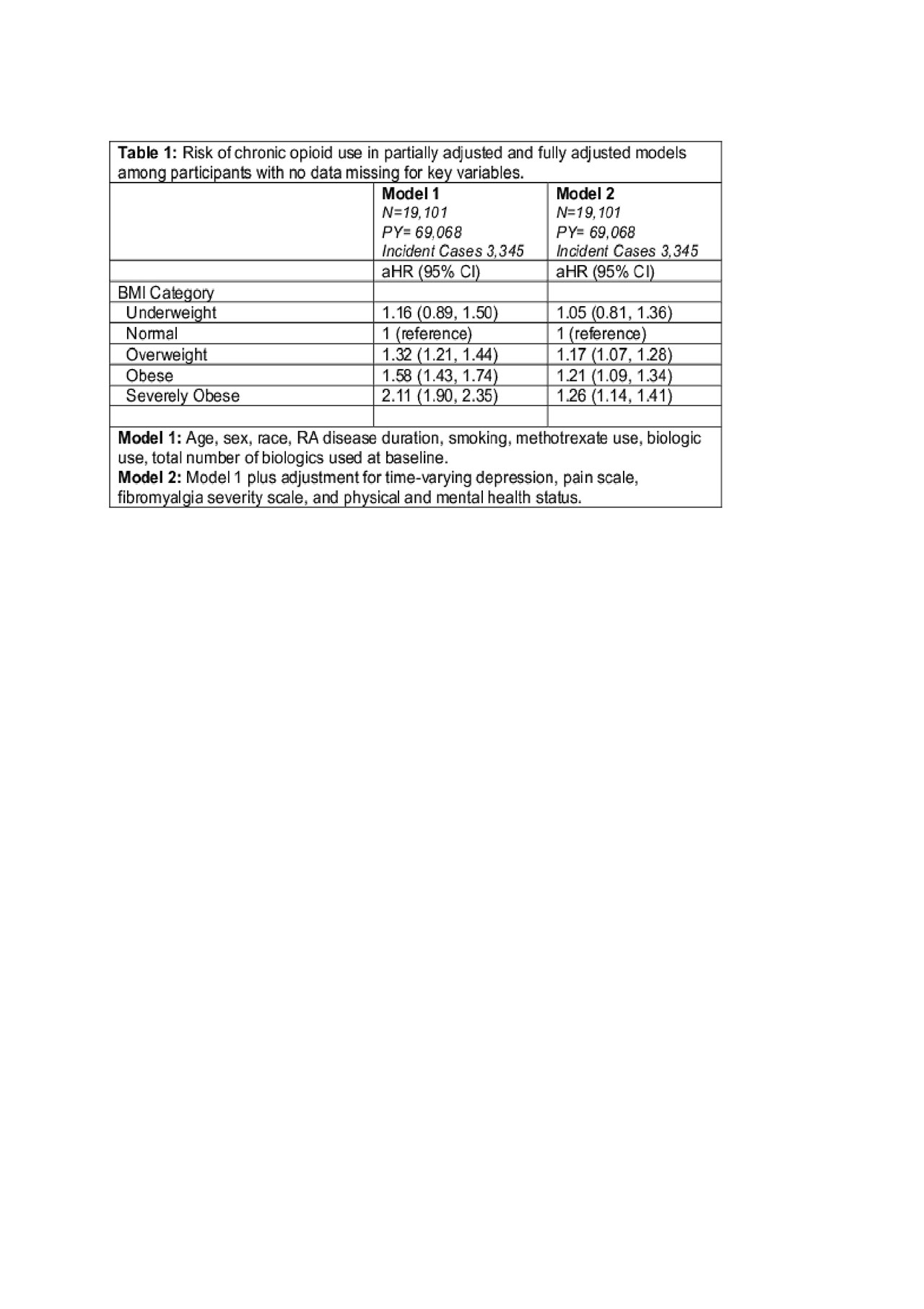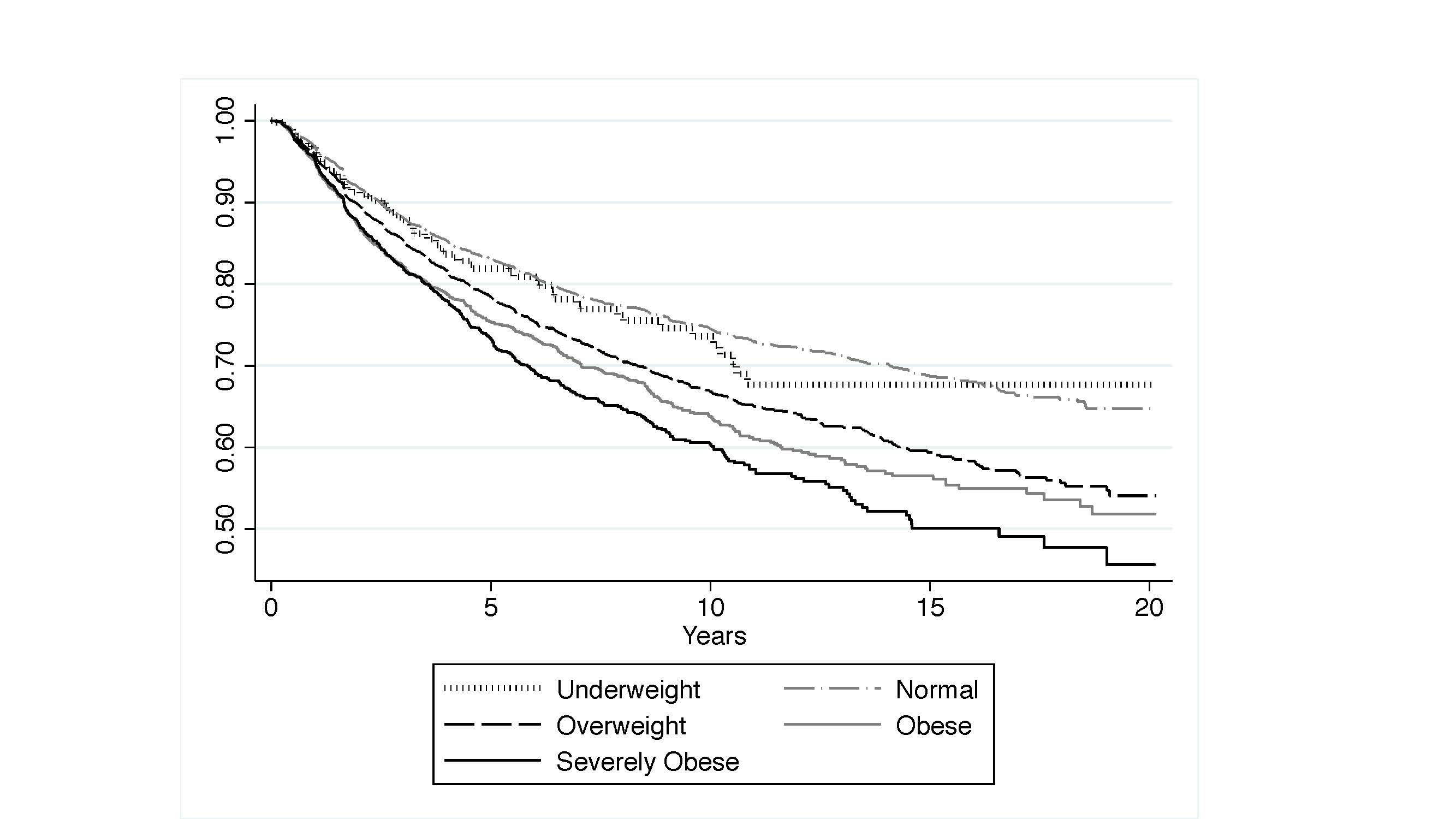Session Information
Session Type: Poster Session (Sunday)
Session Time: 9:00AM-11:00AM
Background/Purpose: Prevalent chronic use of opioids approximately 17% among patients with rheumatoid arthritis (RA) and has increased over the last decade.(1) Obesity may be a risk factor for chronic opioid use through an association with greater comorbidity, non-inflammatory musculoskeletal disorders, disability, and pain sensitization. We therefore hypothesized a higher rate of use of chronic opioid use in obese patients with RA. We further hypothesized that this relationship would be at least partially explained by worse pain and quality of life scores reported over time in this group.
Methods: RA participants in Forward, the National Databank for Rheumatic Diseases, were asked about use of opioid medications on semi-annual surveys between 1999 and 2018. Incident chronic opioid use was defined as new use extending over two contiguous surveys as previously defined. Cox proportional hazards models evaluated associations between body mass index (BMI) category at enrollment and incident chronic opioid use. Initial models considered demographics, smoking, disease duration, and baseline treatments. Subsequent models incorporated time-varying measures depression, pain scores, fibromyalgia severity scores, and physical and mental health status from the SF-36 in order to determine the contribution of these factors to the association between obesity and opioid use.
Results: A total of 25,775 participants were included in this analysis and there were 4,861 incident cases of incident opioid use in 108,864 person-years of follow-up. Higher BMI category was associated a higher risk of incident chronic opioid in a dose-dependent manner. In initial models, severe obesity was associated with a much higher risk of incident use [HR 1.87 (1.72, 2.04) p< 0.0001] compared to normal BMI. Among participants with data for all variables, adjusting for time-varying pain, fibromyalgia, and quality of life scores partially attenuated the relationship (Table 1), suggesting that 69% of the risk was explained by these factors. Based on the absolute incidence at 5 years predicted by Model 1 (Table 2), obesity is expected to account for 39% of use among severely obese individuals. Based on the risk difference of 13%, the prevention or reversal of severe obesity in 8 patients would be expected to prevent one case of chronic opioid use at 5 years.
Conclusion: Obesity is associated with a substantially higher incident chronic use of opioids. This relationship is largely explained by greater reported pain, depression, and poor quality of life over time. Approximately 39% of incident use among severely obese individuals might be attributed to the obesity itself, suggesting a major public health impact on this problem. Interventions to prevent or reduce obesity and related complications could have a substantial impact on chronic use of opioids in this population.

Obesity and Opioids Abstract_Table 1

Obesity and Opioids Abstract_Table 2
To cite this abstract in AMA style:
Baker J, Pedro S, Michaud K. Obesity and Incident Opioid Use in Rheumatoid Arthritis [abstract]. Arthritis Rheumatol. 2019; 71 (suppl 10). https://acrabstracts.org/abstract/obesity-and-incident-opioid-use-in-rheumatoid-arthritis/. Accessed .« Back to 2019 ACR/ARP Annual Meeting
ACR Meeting Abstracts - https://acrabstracts.org/abstract/obesity-and-incident-opioid-use-in-rheumatoid-arthritis/

